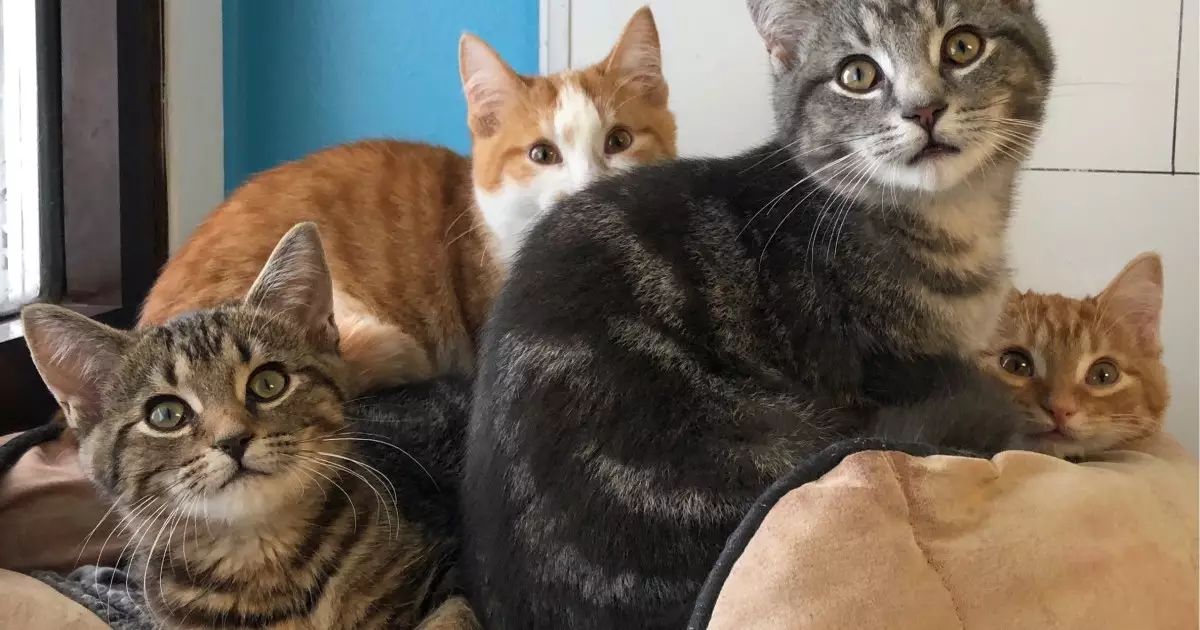Adopting a cat can be one of the most fulfilling experiences for an animal lover. The joy and companionship they bring are immeasurable; however, many cat enthusiasts often find themselves wondering if they have room for more furry friends. As exciting as it may be to think about expanding your feline family, it is crucial to evaluate the implications of living with multiple cats. In this article, we will delve into the complexities of managing a multi-cat household and provide valuable insights on how many cats may be too many.
For many cat owners, the idea of having a household brimming with purring companions is irresistible. Cats offer a unique sense of comfort and affection that can be comforting, especially during difficult times. Once a cat owner becomes accustomed to this dynamic, the urge to adopt more can become overwhelming. It’s not uncommon to daydream about adopting not just one but several cats, leading to visions of a cozy home filled with the delightful antics of your felines.
However, while it is natural to feel this desire, it’s vital to consider the potential challenges that come with an increased number of pets. The line between a fulfilling pet ownership experience and overwhelming chaos can often be thin. The primary challenge lies in ensuring that each individual cat receives sufficient love, care, and attention.
The question of how many cats is too many is subjective and varies from person to person. Factors such as living space, financial resources, and personal capacity to provide care all play significant roles in this evaluation. Many experts, including veterinarians, suggest that more than six cats may lead to potential issues.
One must realize that cats thrive on individual attention, and overcrowding can create gradients of stress not only for the cats but also for their owners. With a growing number of felines, it becomes increasingly difficult for owners to maintain a healthy environment. Issues surrounding personal interaction, spatial distribution, and properly managing veterinary care escalate rapidly with each additional cat.
Potential Challenges of Overcrowding
When the number of cats increases, many owners begin to encounter specific challenges that can impact the well-being of both humans and animals. For starters, providing adequate nutrition and health care for multiple cats can become a logistical nightmare. As the family expands, the responsibility to provide food, litter, and medical attention increases exponentially.
Moreover, space constraints can become apparent quickly. Cats are territorial creatures, and their natural instinct is to assert dominance over their environments. In a home where many cats reside, there may not be enough territory to go around. Overcrowding can lead to aggression, behavioral issues, and overall distress among your pets. Cats need individualized space where they can exercise and establish personal territories without fear of competition from their housemates.
Another glaring concern is the financial burden that accompanies caring for multiple pets. Responsible pet ownership requires an understanding of the long-term financial commitment, which includes regular veterinary visits and emergency medical expenses. As you welcome more cats into your home, be prepared for these costs to multiply significantly.
If you are contemplating adopting additional cats, it is essential to evaluate a few key factors to ensure that you can responsibly care for them. One widely accepted guideline suggests having one litter box per cat, plus one extra. This ensures that each feline has ample opportunity for hygiene and reduces tensions over shared resources. Furthermore, establish distinct areas for food, litter, and play within your home to cater to your cats’ needs.
Consider your personal time and energy levels. Are you able to dedicate considerable time each day for grooming, play, and social interaction with each cat? All these factors are crucial in creating an environment that fosters healthy relationships among your pets.
Additionally, ensure that you have financial capabilities in place to accommodate food supplies, veterinary care, and potential emergencies. Having a safety net can relieve some of the stress associated with unpredicted costs and foster a better environment for both you and your pets.
Ultimately, responsible pet ownership revolves around knowing your limitations and prioritizing the welfare of your pets. While it might be tempting to expand your family of felines, it is crucial to strike a balance. Owning pets should never lead to an overcrowded situation that compromises their health and happiness.
Healthy and happy cats require devoted attention and resources, so think carefully before deciding to adopt more. After evaluating your circumstances, it may be wiser to provide a loving and adequate home for a manageable number of pets rather than risk the welfare of all your animals by overcrowding.


Leave a Reply